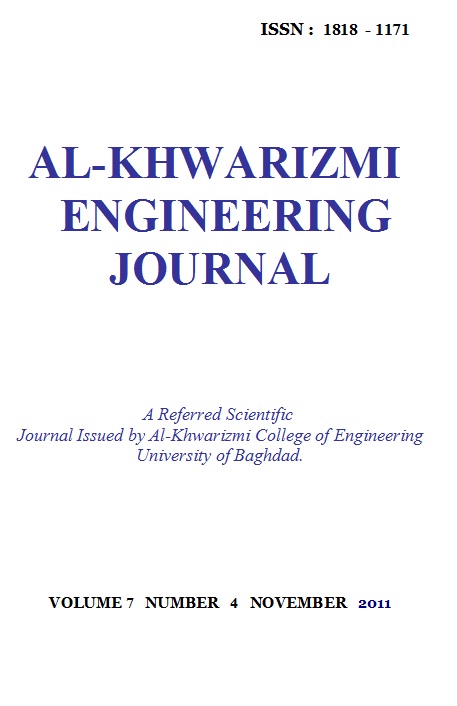Simulation of Oxygen Mass Transfer in an Internal Loop Airlift Reactor with Axial Dispersion Model
Keywords:
Keywords: Airlift bioreactor, reactor, dissolved oxygen; modeling, axial dispersion model, hydrodynamics, mixing, internal loop, liquid circulation velocity, gas holdup.Abstract
The effect of superficial gas velocity within the range 0.01-0.164 m/s on gas holdup (overall, riser and down comer), volumetric oxygen mass transfer coefficient, liquid circulation velocity was studied in an internal loop concentric tubes airlift reactor (working volume 45 liters). It was shown that as the usg increases the gas holdup and also the liquid circulation velocity increase. Also it was found that increasing superficial gas velocity lead to increase the interfacial area that increases the overall oxygen mass transfer coefficient. The hydrodynamic experimental results were modeled with the available equations in the literature. The predicted data gave an acceptable accuracy with the empirical data.
The final empirical and predicted data were adopted in a mathematical model for oxygen mass transfer to predict the oxygen profile along the reactor. The predicted results have been validated with the experimental results. The simulated results based on the dispersion model for the riser and down comer and the perfect mixed model for the gas-liquid separator, agreed well with the experimental results over the studied range of operating conditions.
Downloads
Downloads
Published
Issue
Section
License
Copyright: Open Access authors retain the copyrights of their papers, and all open access articles are distributed under the terms of the Creative Commons Attribution License, which permits unrestricted use, distribution, and reproduction in any medium, provided that the original work is properly cited. The use of general descriptive names, trade names, trademarks, and so forth in this publication, even if not specifically identified, does not imply that these names are not protected by the relevant laws and regulations. While the advice and information in this journal are believed to be true and accurate on the date of its going to press, neither the authors, the editors, nor the publisher can accept any legal responsibility for any errors or omissions that may be made. The publisher makes no warranty, express or implied, with respect to the material contained herein.












